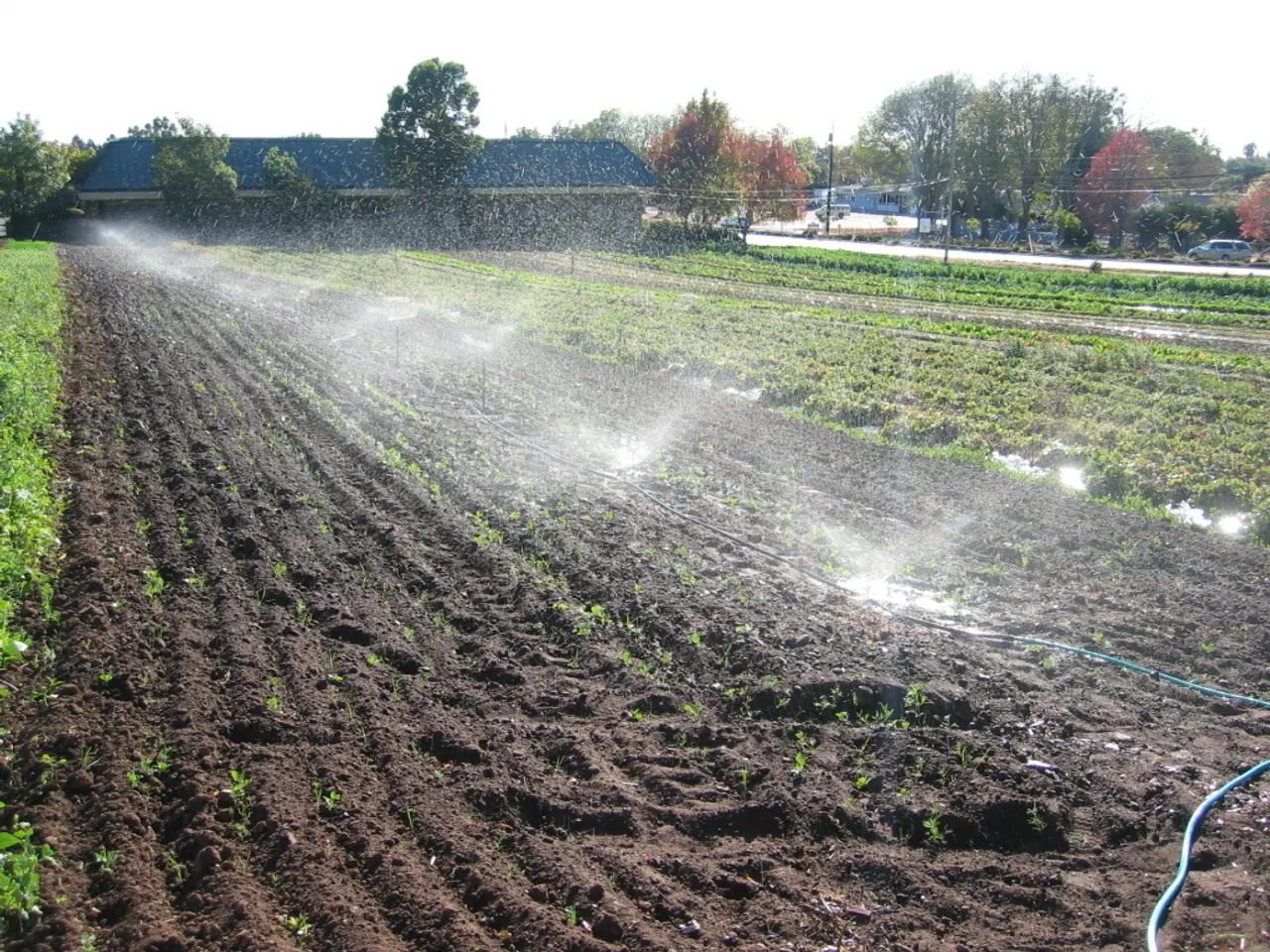Preventing Irrigation System Malfunctions: strategies for reliability
In the realm of gardening, an efficient irrigation system is paramount for healthy plant growth and water conservation. Regular maintenance is the key to keeping these systems running smoothly throughout the year.
Situations may arise where a more thorough check or intervention is needed for the irrigation system. Regular maintenance is essential to keep the system efficient and prevent stress and damage to components, increasing the lifespan of the entire system.
Zones of the garden that remain dry or have unusual flooding are clear signs of a problem. Part of the lawn receiving too much or too little water could be due to clogged nozzles, misplaced spray heads, or imbalanced pressures. Abnormal pressure in the irrigation system can indicate leaks, blockages, or damaged solenoid valves. Regular pressure checks and leak detection are necessary to maintain the system's stability.
Each zone of the irrigation system should maintain stable pressure, and there should be no unusual wet spots or suspicious puddles. A small malfunction in irrigation systems, if not detected in a timely manner, can escalate into significant problems such as leaks, clogs, or non-functioning solenoid valves.
To prevent such issues, the best practices for regular irrigation system maintenance include:
- Establishing a regular maintenance schedule with inspections at least once or twice a year to detect minor issues early, avoiding costly repairs.
- Inspecting for leaks and damage such as cracked pipes, broken sprinkler heads, and leaking valves; also watching for underground leaks indicated by soggy lawn patches or higher water bills.
- Cleaning sprinkler heads, nozzles, valves, and filters to remove dirt, sediment, and mineral deposits that can clog the system and reduce water flow.
- Adjusting sprinkler heads to ensure proper spray angles and even coverage, preventing wasted water on sidewalks, driveways, or dry spots.
- Testing and adjusting valve function individually to ensure reliable operation, and inspecting electrical connections (wiring, solenoids) for corrosion or damage.
- Regulating water pressure with pressure regulators or booster pumps to maintain ideal operating ranges and prevent system strain.
- Updating controller settings seasonally based on weather patterns and watering needs; scheduling watering during early morning or evening to reduce evaporation loss.
- Conducting system flushing to remove sediment buildup inside pipes and components.
- Keeping records of repairs and routine checks to monitor performance and assist with warranty or service contracts.
- Performing seasonal services such as winterization to prevent freeze damage and spring startup to ensure system readiness after winter.
- Considering professional evaluations for backflow testing and complex repairs beyond DIY capabilities to maintain system safety and performance.
Periodic system tests should be performed at least once a month, activating each zone and carefully observing the system's behavior. Cleaning filters and nozzles at every change of season, or more often if the water is particularly hard, helps in maintaining water flow and preventing blockages. Installing rain sensors can optimize water consumption and prevent unnecessary irrigation in case of rain.
A well-maintained irrigation system ensures uniform water distribution, reducing waste and ensuring plants get exactly the amount of water they need. A well-designed irrigation system with quality components lasts longer and withstands environmental stresses better. Choosing quality materials for an irrigation system can help it last longer and withstand environmental stresses better.
By consistently following these practices, irrigation systems operate efficiently, conserve water, reduce downtime, and extend component lifespan. Regular maintenance is the cornerstone of a healthy and efficient irrigation system, ensuring consistent and efficient water distribution, promoting healthy plant growth, and reducing water waste.
- To maintain an efficient home-and-garden lifestyle, it is crucial to follow a regular maintenance schedule for an irrigation system, ensuring timely detection of issues and avoiding costly repairs.
- In the pursuit of a home-improvement project, upgrading to quality components for an irrigation system can lead to extended lifespan and improved resilience against environmental stresses, promoting both water conservation and healthy plant growth.




